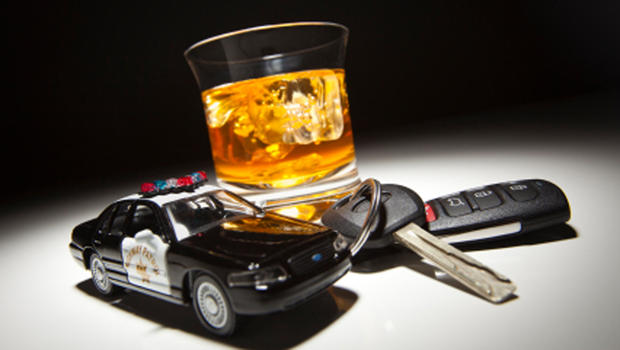
DRIVER’S EDUCATION ROADMAP
OWI, DWI, OUI
It doesn’t matter what you call it, OWI (operating while intoxicated), DWI (driving while intoxicated) or OUI (operating under the influence), it all means grave danger behind the wheel. Driving is a complex, unpredictable and dangerous task on any day of the week in any weather conditions. We must all be as wide awake and alert as possible to protect ourselves as best we can from the inherent dangers associated with driving. If we get behind the wheel in any condition other than the best that we can be, we are truly just showing our ignorance of the risk to ourselves and the lives of others. Make sure that you are not part of the problem. There is never a good enough reason to get behind the wheel when you have been using ANY type of drug.
As I’ve said in previous writings, alcohol is a drug just like any other drug. We cannot separate the different types of drugs when we talk about driving. They all mess up our reasoning, our perception of reality, our vision, our awareness, our reaction times and our hand – eye coordination. It doesn’t matter what you are using, you should not be driving. Society separates the different types of drugs so that the important people of the world can still legally drug themselves with their prescription drugs and alcohol and not worry about incarceration, but behind the wheel any type of intoxication is very dangerous.
Estimated Number of Persons in the US with a Substance Use Disorder 2015 (courtesy of samhsa.gov)
- Approximately 20.8 million people aged 12 or older had an SUD in the past year.
- This includes 15.7 million people who had an alcohol use disorder and 7.7 million people who had an illicit drug use disorder.
- An estimated 2.7 million people aged 12 or older had both an alcohol use disorder and an illicit drug use disorder in the past year.
That is a lot of people using drugs and that doesn’t include the unreported people or the people on prescription medications. Way too many people use drugs and drive automobiles daily, as a part of their normal everyday life. When a person has been using drugs every day, they don’t even feel most of the effects anymore, it just feels normal to them. Whether their drug of choice is legal or not doesn’t matter when it comes to their ability to drive. They are still impaired. They are still a danger to themselves and anyone who is unlucky enough to get in their way.
For any of you who question the powers of alcohol, consider the graph below courtesy of drugwarfacts.org.
(Addictive Qualities of Popular Drugs)

So, this graph is showing us that of these drugs listed, alcohol is only second to heroin in 3 of the 5 categories and actually worse than heroin in 2 of the categories. As we can see, alcohol is a heavy hitter among drugs and it doesn’t matter how you administer it, beer and hard liquor have the same alcohol in them, just in different concentrations. As with any drug, the only thing that really matters is quantity over time. All drugs affect you based on how much you take and over what period of time you take them. There is no quick way to sober up. Only time will allow the drugs to pass from your system.
Some people will tell you that your blood alcohol content will stay below the legal limits if you only have one single drink per hour, but don’t count on it. If you have had any alcohol, you shouldn’t be driving, because any alcohol affects you, even a little bit. Your level of intoxication level with any drug can vary greatly depending on many different factors such as how tired you are, how much you weigh, how active you are, what you have eaten, whether you have any other types of drugs in your system, etc. There is no great way to tell if you are OK to drive, because as soon as the drug is administered, your perception of reality is changed. The intoxicated one should never be the judge. The only safe choice is to simply not drive .
So, many people drive every day and many people do drugs every day. That is a very scary combination. I’m surprised our situation isn’t worse than it is.
2014 Statistics (courtesy of cdc.gov)
- 9,967 people were killed in alcohol-impaired driving crashes. That is 31% of all traffic-related deaths in the U.S.
- Of the 1,070 traffic deaths among children ages 0 to 14 years, 19% involved an alcohol-impaired driver.
- Of the 209 child passengers ages 14 and younger who died in alcohol-impaired driving crashes, over half were riding in the vehicle with the alcohol-impaired driver.
- Over 1.1 million drivers were arrested for driving under the influence of alcohol or narcotics.
- There are 121 million self-reported episodes of alcohol-impaired driving among U.S. adults each year.
- Drugs other than alcohol (legal and illegal) are involved in about 16% of motor vehicle crashes.
- 13% of nighttime, weekend drivers have marijuana in their system.
- Marijuana users were about 25% more likely to be involved in a crash than drivers with no evidence of marijuana use.
- Among drivers with BAC levels of 0.08% or higher involved in fatal crashes, 30% were between 21 and 24 years of age.
- The next two largest groups were ages 25 to 34 (29%) and 35 to 44 (24%).
To get some specific information regarding Wisconsin’s impaired driving. Click Here
Some more statistics (courtesy of nhtsa.gov)
2015 stats:
- Every day, 28 people in the United States died in an alcohol-related vehicle crash—that’s one person every 53 minutes.
- There were 10,265 DEATHS FROM ALCOHOL IMPAIRED CRASHES.
2010 stats:
- 4,000 drivers were killed with drugs in their systems. This doesn’t count those who had drugs in their system without test results, or those killed by drivers with drugs in their system.
- 57% of fatally injured drivers had alcohol and/or other drugs in their system – 17% had both.
- 7% of drivers, who were involved in fatal traffic crashes tested positive for THC.
- 21% of drivers who were involved in fatal traffic crashes had alcohol levels above the legal limit.
- Drugs other than alcohol are involved in 18% of motor vehicle driver deaths.
2013-2014 roadside survey
- 22% of drivers tested positive for illegal, prescription, or over-the-counter drugs in blood and/or oral fluid tests.
- The drug showing the greatest increase among drivers from 2007 to 2013/2014 was marijuana (THC).
- The percentage of THC-positive drivers increased from 8.6 percent in 2007 to 12.6 percent in 2013/2014
- During weekday day time, 12.1% of drivers tested positive for an illegal drug; 10.3% tested positive for prescription and OTC medications.
- During weekend night time, 15.2% of drivers tested positive for an illegal drug; 7.3% tested positive for prescription and OTC medications.
- In 2013, 9.9 million people (3.8% of the population) reported driving under the influence of illicit drugs. This was highest among 18-25 year olds, where 10.6% reported driving under the influence of illicit drugs.
Statistics like these should make us a bit afraid to even drive. Knowing that 1 out of every 4 people who drive past you are on some type of drug is down right scary. We all need to change our behavior to see any difference in these statistics. There are hundreds of excuses for why you need to drive or why you can’t leave your car parked where it is or that you are fine to drive, but it is all just crap. There is never an excuse to drive while under the influence of anything. Nothing you need to do while you are on drugs is worth a life. Besides, with all of the taxis, buses, subways, trains, Uber and Lyft rides available to us, we really have no excuse.
JUST DON’T DO IT.

